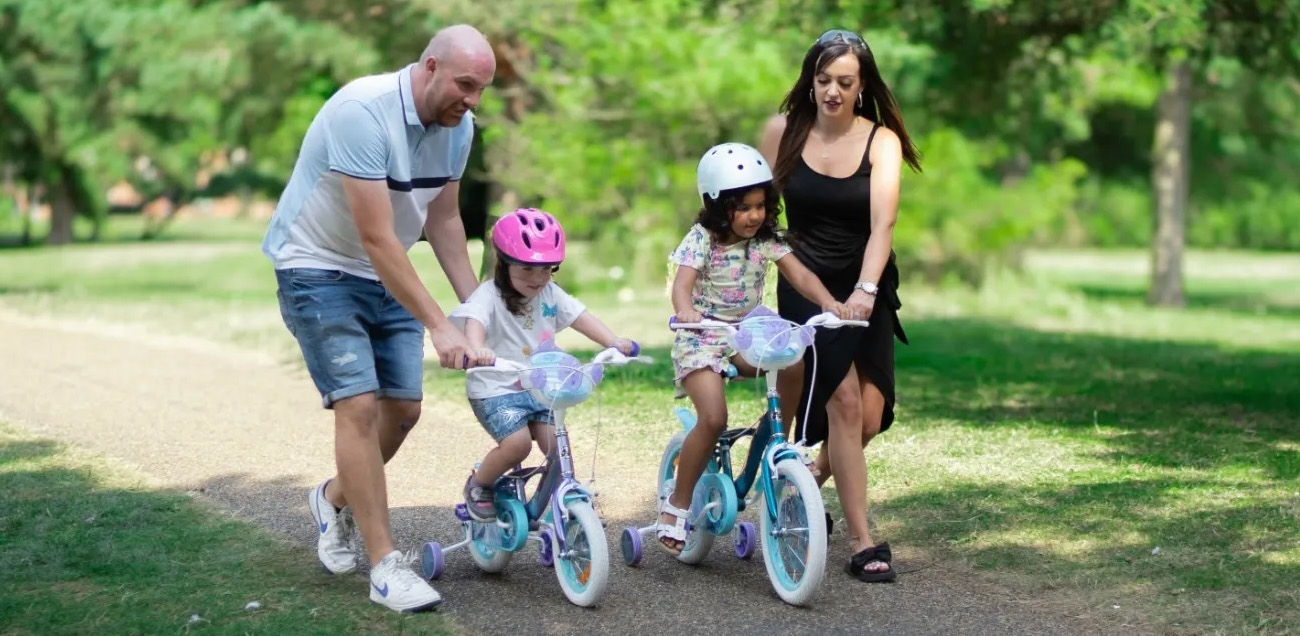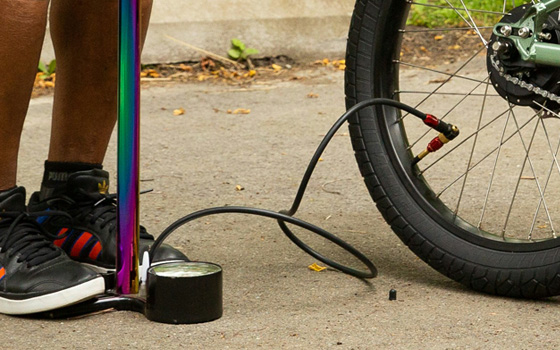A Parent’s Guide on How to Maintain a Kid’s Bike
8 min read
Last Modified 17 June 2025 First Added 17 June 2025

Keeping your little adventurer’s beloved bike in good condition will ensure that it remains safe for them to ride and that they can have fun using it for longer. This guide will show you how to maintain a kid’s bike, providing you with essential tips and information on regular checks you can do to ensure your child can have fun whilst remaining safe, to give you peace of mind.
Before every bike ride, there are quick and easy checks you can make to ensure the bike has no apparent issues. You should check that the tyres are firm and that the brakes work effectively. To do this, squeeze the brake levers to ensure the bike brakes safely. You should also check the chain to ensure it is relatively clean and running smoothly. Finally, you should also look for any loose bolts and check the general stability of the bike to see if there are any obvious deficiencies. Regular maintenance like this ensures that your kid can have a safe ride.
You don’t need to get your child’s bike serviced. Checks like the ones described above are just some basic bike maintenance measures that can help ensure the bike is in good enough condition to play with. How to maintain a bike revolves around giving it a good clean, checking and adjusting gears and brakes, checking the condition of the chain and ensuring that the tyres are pumped and don’t have any punctures. Doing these tasks regularly will ensure that the bike is in peak condition.
If your little one is starting to learn to ride a bike, balance bikes are often a great option. They don’t have pedals and are an effective way for them to learn to steer and balance. This means that when they move to a pedal bike, they have some previous experience on a bike, which can make the transition smoother. If you prefer, you can use training wheels (stabilisers), but many parents find that balance bikes can help their child find their centre of gravity quickly, making them the preferred option.
If you’re unsure what size bike to get for your child, read our helpful bike size guide.
Brakes are very important to ensuring a safe ride. Most kids’ bikes will have rim brakes, where brake pads press against the wheel rim to slow down. If in doubt, always check what features and brakes your child’s bike has before purchasing, as some mountain bikes may have disc brakes. However, rim brakes are more common and very effective.
It can seem complicated working out how to tighten bike brakes. However, this easy guide on tightening rim bike brakes can show you how to do it in just a few steps:
Another tip to consider is if the barrel adjuster is all the way down and the brakes are still loose. If this is the case, the brake cable may need tightening at the brake caliper. To do this, you will need to loosen the pinch bolt, pull more cable through, and then retighten the bolt. We recommend contacting a local bike shop if you’re uncomfortable making this adjustment.

Your child’s bike needs to be washed occasionally to keep it in good condition. All you need is a bucket of water, some mild detergent (dish soap will be fine!), and a microfiber cloth or soft sponge. Don’t use a high-pressure washer or jet wash, as it can force the water into bearings.
Gently wash the bike frame with soapy water using a sponge or cloth. A soft-bristled brush can help with dirty or stubborn spots. Rinse with clean water or a gentle hose – you can dry with a clean towel or a dry cloth.
Bike wheels can be dirtier than the frame, so you might want to wear gloves when cleaning them! Use your soft brush and soapy water on the bike tyres and wheel rims. If they have rim brakes, pay special attention to the braking surface on the wheel rims. An essential element regarding how to maintain a bicycle involves keeping the brakes in good working condition. Keeping them clean ensures that they work better.
Cleaning bike chain components can be quick and easy! For very dirty bike chains, you might want to use a specific bike cleaner or degreaser and a stiff-bristled brush (an old toothbrush works well!) Apply and scrub, ensuring you get into the links and rear sprockets. You should then gently rinse the chainset with water. Finally, wipe the chain thoroughly with a damp cloth before using a dry cloth to ensure it’s dry and clean.

You can easily check the bike tyre pressure by pressing the wheel – ideally, it should be springy and firm to the touch. When looking into how to pump a bike tyre, it’s crucial to know the recommended tyre pressure – this can be found on the sidewall of the bike tyres; it’ll give a range (e.g., 35-50 PSI – pounds per square inch). Ensure you have a pump with a pressure gauge. Unscrew the valve cap on the bike tyre valve. Attach the pump and start pumping to the recommended range. For kids, a slightly softer tyre is recommended as it can bring more comfort and grip, so make sure you don’t over-inflate it!
When performing your regular checks, make sure you give the bike a quick look over. Check that all the axle bolts on the wheel are snug. Do the bolts holding the handlebars and seat look secure? When doing checks, just make sure there are no obvious loose bolts. A gentle tightening with a spanner or Allen key is probably all that is needed.
Applying chain lube is a really important aspect regarding how to maintain a kid’s bike, but it can easily be forgotten! You can choose either dry lube or wet lube. Dry lube is great for dry, dusty conditions – when applied, it dries into a waxy film which attracts less dirt. Wet lube is more water-resistant, which makes it better for wet conditions. Apply a small drop of the bike chain lubricant to each roller/link while slowly back-pedalling. After letting it sit for a few minutes, take a clean rag and wipe off the excess lubricant.
Now that you know how to maintain a bike, it’s important to remember that sometimes a trip to the bike shop is the best solution. If you spot significant signs of wear on parts like the chain or brake pads, if the bike gears are skipping or not shifting smoothly, or if you’ve attempted to make adjustments (such as to bike brakes) and the bike doesn’t seem right, we would recommend going to a bike shop.
For any repair that feels outside your comfort zone, it’s better to ask a bike mechanic to help, as they have the experience and bike maintenance tools for more complex jobs.
We recommend keeping kids’ bikes indoors, in a garage, shed, or hallway corridor. However, if storing the bike outside is the only option, we recommend using a waterproof bike cover to protect it from potential sun and rain damage. We also recommend using a bike lock as a security measure, similar to when leaving the bike parked in the street.
We hope that you’ve found this bike maintenance guide helpful. To learn more, you can read our useful guide on the types of accessories for your child’s first bike. If you’re looking for another bike for your kid, check out our range of kids’ bikes.
Read our disclaimers.